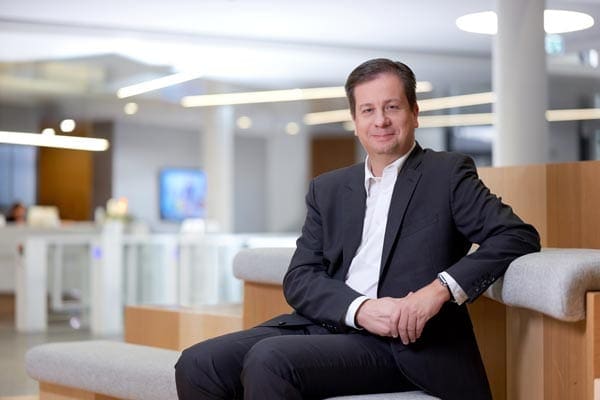During the virtual press conference about SAP’s Q4 and full-year 2021 financial results in January 2022, SAP CEO Christian Klein’s enthusiasm was hard to miss. He started off by saying, “What a difference a year can make. SAP accelerated its growth in the cloud significantly, far above expectations. RISE with SAP has in the meantime become a blockbuster success. I’m also really happy about the strong mindset and teamwork within the SAP executive board and across SAP.”
Whistling in the dark?
We’ve talked about this idiom before, and it’s just as relevant as it was then. Instead of dealing with a source of danger or fear, someone instead tries to increase their courage by whistling a fun little melody. Christian Klein might have realized the danger SAP is in.
It’s no secret that not all SAP customers have migrated from ERP/ECC 6.0 to S/4 Hana yet. Maybe some of them will tackle this Herculean task this year, some might take a few more years to prepare. Most of SAP’s customers will barely make the deadline in 2027, and some might even cut it close with extended support until 2030. After everything’s said and done, the question of how modern S/4 and Hana really are will be more pressing than ever.
Of course, ERP software is under continuous development by SAP. However, it would be nice to know what SAP’s plans are beyond 2030. Not in the sense of what will happen to S/4 and Hana – SAP will continue to support them at least until 2040. However, in 2030, Hana will be 20 years old, and S/4 will celebrate its 15th birthday – an eternity in the fast-paced world of IT.
With forty years of ERP know-how under its belt, SAP’s business processes are still the de facto standard when it comes to backoffice functionalities. Everything else, though, is up for debate.
Technology versus processes
Christian Klein himself noted in the aforementioned press conference, “In order to be competitive, customers need more than just a technical migration to the cloud. The hardest part in the transformation is not just to implement new technology, it is to change long-standing business models and drive business process standardization. A lot of customers discovered RISE with SAP as a unique offering which allows them to perform a holistic business transformation.”
However, RISE has not been the breakthrough success that SAP might have been hoping for, as a joint survey by the German-speaking SAP user group DSAG and ASUG (Americas’ SAP Users’ Group) shows. Among ASUG members, 24 percent view the RISE with SAP offering as being somewhat of value or high in value, while 12 percent of DSAG members say the same. Among the latter, 39 percent view RISE with SAP as having little value or no value at all (ASUG: 11 percent).
DSAG Board Member for Transformation Christine Tussing said about the results, „SAP needs to communicate the added value of RISE with SAP and the associated transformation potential much more clearly. Only companies that recognize this value as a key component of their business transformation will make RISE with SAP a part of their future path.“
Christian Klein remains adamant about RISE’s success, saying, “RISE is a journey where SAP gets even closer to our customers to deliver on three key benefits: business process redesign, cloud migration, and innovation. Our ambition with RISE is not just a technical move of existing landscapes. We want to help customers get rid of the complexities in existing landscapes first and move to a modular and integrated ERP in the public cloud.”
Hope breeds eternal misery
The idea of getting all customers into the cloud has yet to be fulfilled, according to the DSAG/ASUG study. When it comes to experiences with cloud solutions, 57 percent of ASUG members are somewhat or very satisfied with solutions in the SAP space, compared with only 30 percent of DSAG members. Meanwhile, 21 percent of DSAG members have a somewhat or very negative view, while this number is five percent of ASUG members. In the non-SAP space, 65 percent (ASUG) and 60 percent (DSAG) are somewhat or very satisfied with the cloud solutions they’ve deployed. And only two percent of ASUG members and seven percent of DSAG members have a somewhat or very negative view.
While 37 percent of ASUG members believe it is somewhat to very likely that they will consider RISE with SAP, only 10 percent of DSAG members said the same at the time of the survey. SAP CFO Luka Mucic nevertheless echoes Klein’s comments, saying, “RISE with SAP was a stellar success and contributed greatly to our excellent results. Not only did we see an adoption by 1,300 customers, which was significantly ahead of our expectations, but also do we see a high adoption rate among our largest customers.”
To continue this supposed momentum, SAP is not only counting on its employees, but also on its partners. It recently announced that IBM will be the first SAP partner to offer cloud infrastructure and managed services in the context of RISE. IBM is also unveiling a new program, Breakthrough with IBM for RISE with SAP, a portfolio of solutions and consulting services that help accelerate and amplify the journey to S/4 Hana Cloud. So, one year in, customers now have one partner taking care of the technical side of RISE. Is that the stellar success Mucic was talking about?
Contrary to what Mucic and Klein have been saying, IBM clearly states in its press release that clients look to adopt hybrid cloud strategies. With the launch of the premium supplier option with IBM for RISE with SAP, clients will have the tools to help accelerate the migration of their on-premises SAP software workloads to IBM Cloud.
Christian Klein, however, is convinced of the merits of “Cloud Only”, saying, “There is now a large move of our installed base to the cloud. Many customers are all going with us, because when you compare on-prem to cloud, customers just don’t have the time anymore to make complex upgrades every seven years or to modify their system landscapes. And of course, we keep on innovating in the cloud. Customers want to move to the cloud; they don’t want to fall behind.”
The future of S/4 and Hana
If you can start from scratch, without having to accommodate legacy infrastructure or data, you can migrate to a perfect S/4 Hana system in the cloud in the span of a few weeks – at least in theory. The reality of most customers looks different: Legacy systems and data, dispersed over heterogenous IT architectures. Of course, even with burdens of the past, you can still migrate to S/4; however, instead of a few weeks or months, it will likely take years. Which is why we asked the question: Is S/4 still modern enough?
It definitely ruffled a few feathers, but we need to keep asking it regardless. Because the question is not about S/4 right now; it’s about S/4 after a successful conversion. A lot of SAP customers will take years to complete their S/4 conversion, maybe even until end of support in 2030. It’s only reasonable to ask if S/4 will still be modern enough then.
In 2030, database platform Hana will be 20 years old, S/4 itself will be 15 years old – an eternity in the fast-paced world of IT. Furthermore, S/4 and Hana are proprietary products, which means that every innovation, every upgrade and every improvement have to come from SAP itself. Since Hana and S/4 don’t have a community participating (and investing) in their development, SAP has to take care of everything itself.
If there will be a Hana 3.0 is as of yet undecided, but we do know that S/4 will be continuously updated. We don’t know yet if S/4 will have a successor, and I doubt that SAP itself knows. Customers need answers, though, sooner rather than later. The responsible thing to do would be to answer customers’ questions instead of repeating the same talking points about RISE over and over again.


















![rise with sap christian klein [shutterstock: 1709365627, Audio und werbung]](https://e3zine.com/wp-content/uploads/2022/02/rise-with-sap-christian-klein-shutterstock_1709365627.jpg)




Add Comment